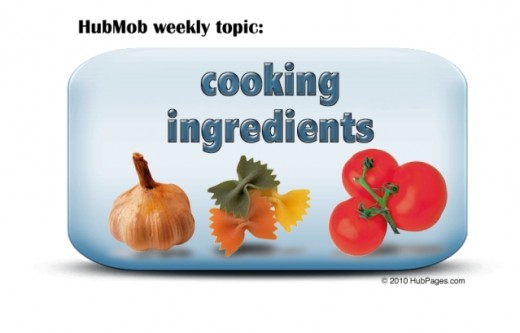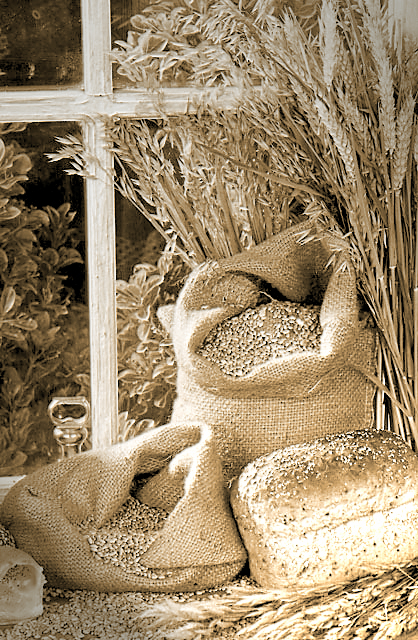A quick and easy guide to basic flour

Flour has been feeding us for centuries. Anthropologists have found that the teeth of medieval skeletons tend to be very worn - a result of stone milled flour. Today’s mills use cast iron or steel instead, so bits of stone in our flour is no longer a problem. “Stone-ground” flour does still have a place on the grocery shelf; keep your eyes on the label if you’re looking for it.
Many grains are used to make flour. The white powdery goodness that we generally bake with is wheat flour. There are several types of flour, each with it’s own specialty. What makes each type different? They are all made from wheat, but they are milled differently and each has a unique protein content.
When flour is cooked, the heat and water convert the protein into gluten. The amount of gluten in the flour affects the outcome of your recipe. You don’t want your homemade bread to be light and delicate, and you don’t want your fresh baked cake to be dense and chewy.
Here is a quick guide to the various types of flour you see on those grocery shelves.

AP Flour
All purpose flour is just that: all purpose. It’s protein amount varies in different regions, but it is generally between 10% and 12%. It is a blend of soft and hard flours. Sometimes it is bleached, sometimes not, but using one instead of the other will not affect your recipe.
Standard and most common, AP flour does a fine job making cookies, bread, pastries and cakes.

Bread Flour
Toast worthy bread needs a strong, sturdy dough. When you’re baking it at home, it is time to specialize. Bread flour is made from hard wheat. It has lots of gluten, because it’s protein content is 12% to 14%.
If you don’t bake bread often, you may not want to stock up on bread flour. That’s not a problem; you can convert AP flour by adding wheat gluten. For every cup of flour, simply add one tablespoon of wheat gluten to sturdy up that dough.
"Sifted flour" vs "flour, sifted"
Sifting affects volume. If you use too much or too little flour, your baking adventure will end badly. Take care to follow the measurements of the recipe.
"Sifted flour" means sift, then measure. "Flour, sifted" means measure, then sift.
Cake Flour
Delicate cakes and pastries don’t need a gluten heavy flour; they need a lightweight. Cake flour is made from soft wheat and has 6% to 8% protein.
Chlorination breaks the gluten down, to make it even lighter. The result is a tender and crumbly cake. It also gives cookies a nice, fine texture.
Cake flour can be substituted for AP flour, but not with equal measurements. To equal one cup of AP, use one cup plus two tablespoons.
As with bread flour, you can make your own cake flour. To substitute one cup, 3/4 of AP - sifted - mixed with two tablespoons of cornstarch does the trick.
Pastry Flour
For pastries and pies, use another specialist: pastry flour. It is very much like cake flour, but it is not chlorinated and has a higher protein content.
Made from soft wheat, it typically has 8% to 10% protein. You may not find it at the grocery store, but health food stores carry it, and you can easily find it on-line.
This flour can also be made at home. To make two cups of pastry flour, mix 1 1/3 cups of AP with 2/3 cup of cake flour.
Flour is a fire hazard
Like any fine powder, flour is flammable and may even explode under the right circumstances.
It doesn't seem like an especially dangerous substance, but don't be fooled. It is.
Just ask the poor baker from Pudding Lane whose flammable flour exploded, causing the Great Fire of London in 1666.

Self-rising flour is readily available. It has about 9% protein, and is mixed with salt and baking powder. It’s a nice time saver, but if it is stored too long the baking powder will lose it’s strength. This results in a poor rise.
Another option is pre-sifted flour. This seems like another quick shortcut for the busy baker, but does it make sense? Sifted flour settles right back down during packaging and shipping. You will still need to sift it before use.
When you fine tune the type of flour to match what you are baking, your results will be outstanding. This basic understanding of flour will turn the simplest recipe into gourmet baking.
© 2010 wyanjen at HubPages
A quick and easy guide to basic flour










